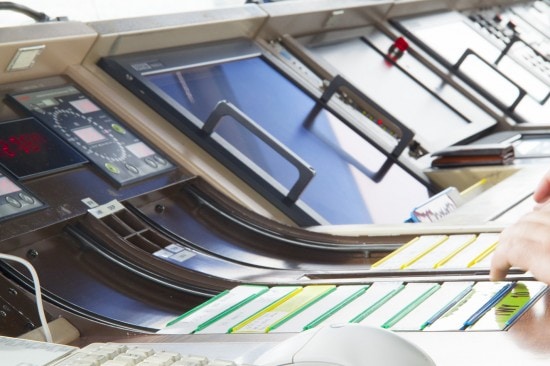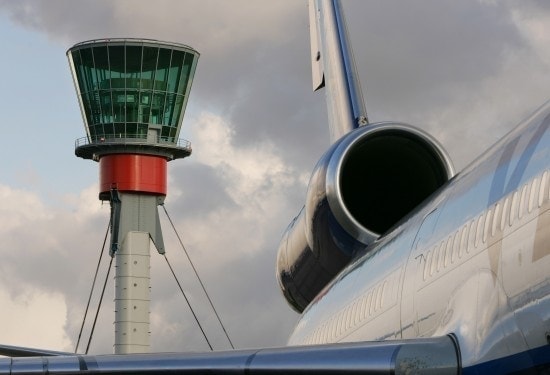
Towards the end of the year we participated as members of the Safety Team at Eurocontrol (European Organisation for the Safety of Air Navigation) in the collaboration forum which the organisation holds three times per year. On this occasion, I had the opportunity to give a presentation on best practice within FerroNATS, Spain’s leading commercial air traffic operator.
Air traffic control is synonymous with stringent procedures and controls with the highest safety protocols. And it cannot be otherwise: safety, the basis of air traffic control, is of vital importance for identifying possible risks and reducing them to the absolute minimum to avoid putting people safety at risk. At FerroNATS we are fully aware of the responsibility inherent in controlling over half a million flights annually, which represent more than 30 million passengers every year. Safety is our priority, there is no room for improvisation.
The safety department at FerroNATS has, with the support of all other departments, consolidated a specific strategy which allows optimisation of all processes to achieve maximum safety and operational excellence. The key to this safety strategy lies in its own unique Safety Management System, and on the added value contributed by our air traffic controllers.
The keys to safety in the management of a control tower
FerroNATS safety strategy
The FerroNATS Safety Management System is proving to be not only a useful model in so far as improving safety for the organisation is concerned, but also a benchmark to be replicated on a European level. Evidence of this is the interest expressed by Eurocontrol in the procedures designed and implemented by FerroNATS.
The key to the company’s safety strategy is based on the four basic principles it is grounded on:
- Continuous safety improvement through the adoption of best practice, which are identified, updated and incorporated in a regular and systematic manner into the management system.
- Use of a safety culture as a catalyst, such that safety is understood as the basic pillar at all levels of the company.
- Involvement of all the staff as a key element in safety management, with all our professionals taking part in an effective manner in its implementation and improvement.
- Use of innovation as a support for safety, through the incorporation of technological tools and big data.
Continuous analysis, research and reporting
Combining these four elements has endowed the company with the most stringent safety standards and allowed it to create a Safety Management System which makes FerroNATS a benchmark within European air traffic control operators.
The FerroNATS Safety Management System is the cornerstone of the company and warrants a description to highlight its efficiency and effectiveness.
The key to the system is a Manual containing all the mandatory processes and procedures required to reach the targets set by the company with regard to safety.
Reporting and investigation of safety incidents are a key element of the Manual. The methodology includes own controllers –different to those involved in the incident– investigating the facts around the safety incident, together with independent researchers to assess whether the analysis carried out by company controllers is sufficiently comprehensive and the corrective measures adopted appropriate. Moreover, the Moderating Committee meets every year to again review all A, B, and C-type incidents occurring throughout the year. This meeting is attended by the Safety Director, an expert from Eurocontrol, the NATS head of Incident Investigation, a FerroNATS safety expert and two safety representatives from the towers where the incidents occurred.
The profile of an air traffic controller
FerroNATS has a 130-strong staff, of which 85% are air controllers.
The profile of FerroNATS staff is key to understanding their competitive advantage in terms of safety. It is a very young group of people, 26% being under 30 and 54% between 30 and 40. A young staff obviously implies a high degree of inexperience. Indeed, 75% of our staff are junior controllers, i.e., they have no prior experience in air traffic, but –and this is where the difference with prior models lies– all of them have university degrees, from engineering, to sciences, economics, etc., meaning they are professionals bringing high added value capabilities and knowledge.
Competence and training of air traffic controllers
One of the aspects generating the greatest interest within the air traffic control community is FerroNATS best practice in terms of monitoring controller competence, and particularly its R/T sampling procedures. These consist in the selection of at least three fragments per year of each controller’s recorded communications in situations of medium to heavy traffic, with the aim of identifying potential areas for improvement and setting individual targets. After analysing the recordings, the unit evaluator goes through the recording with each controller to detect possible improvements in transmission and control techniques.
This procedure has been specially recognised and valued by Eurocontrol, who have requested that systematic information on the process is provided to other air traffic operators with a view to promoting and leading its implementation within the industry.
This is no doubt yet more evidence that, despite its short history, the FerroNATS model is constantly adding value to the industry.







There are no comments yet